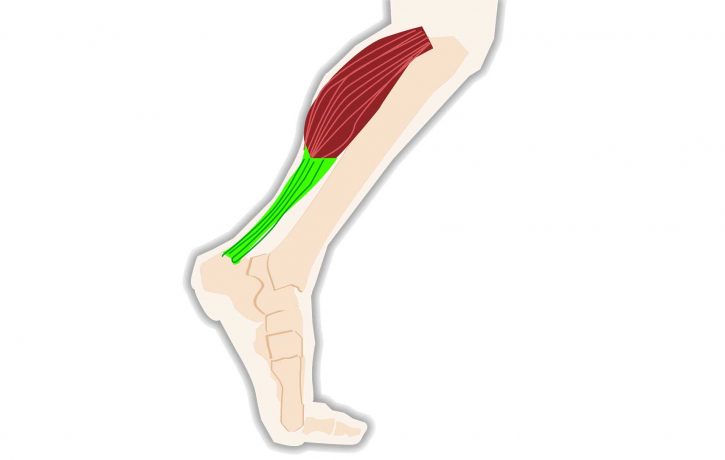Common Injuries Part 1: Achilles Tendinitis

A starter for 10 points….. what do Brad Pitt, Kobe Bryant, David Beckham, Dame Judi Dench, and Dwayne “The Rock” Johnson all have in common?? Is it that they all excel in the acting profession Close but no cigar, especially with Beckham in mind, a great footballer but no actor (sorry David)! The answer is they have all publicly suffered varying degrees of Achilles Tendon injuries.
Ironically Brad Pitt ruptured his whilst filming Troy and playing the role of…. You guessed it Achilles himself!!!! According to Greek mythology, the goddess Thetis dipped her son Achilles in the River Styx to protect him after she had a prophecy of his death. Being extremely careful so he didn’t get swept away Thetis held him by his ankles and remained out of the water leaving them unprotected and therefore his only weakness. Achilles’ ankle proved to be his downfall as he was killed by a poisoned arrow hitting one of his ankles during the Trojan war. Since the late 1600’s the term Achilles heel/tendon has been used to describe the back of the heel or the medical term Calcaneal Tendon.
Your Achilles Tendon or Calcaneal Tendon is located on the back of your lower leg. Starting (origin) just below the bottom of your calf muscles (musculotendinous junction) and connecting (insertion) to the back of your heel (posterior aspect of the calcaneus). It has the honour of being the largest tendon in the human body with an average length of 15cm and width of 2cm.
So what does this tendon do apart from connecting muscles to bone?? It enables the action of plantar flexion (pointing toes) and is a major stabiliser during the gait cycle when we walk. If as recommended we reach the goal of 10,000 steps a day, a great deal of movement is achieved and even more for active individuals who run, play football, hike, go to the gym or have a job that requires long periods of standing up. All these activities as well as just being sat down in a chair (stabilising muscles work even when no movement is seen) can lead to repetitive use giving the body little to no time to repair itself.
As a result of this activity, mild pain might be felt with increased tightness in the calf and ankle. If untreated this can lead to a more intense sharper pain with possible swelling or even a lump forming in and around the back of the ankle. These symptoms can indicate Achilles Tendinitis which could lead to deterioration of the tendon and in turn eventually a rupture may occur which not only is extremely painful but would require surgery and a long recovery period.
If you are experiencing pain in and around the heel, what can you do? Preventative action is always advised, a common reaction is to rest which is good but if you don’t have that luxury because of your job or you are midway through a training schedule, look to add some calf stretching into your daily routine. Check your footwear, shoes with little support can adversely affect Achilles tendons as they may influence an awkward landing pattern for your feet when walking or running. Or look to loosen the lower leg muscles with massage.
Massage is beneficial as a preventative and remedial measure. Recent research shows massaging the actual tendon has little benefit in cases where tendinopathy is diagnosed. However, loading the tendon during exercise, performing regular stretches as well as massaging muscles in around the area is seen as the best and quickest route to recovery. This important element keeps the calf and plantar fascia muscles loose, making day-to-day tasks considerably less painful which in turn allows the said muscles to strengthen.
We offer treatment to help with tendinopathy and the pain associated with tendonitis at The Body Matters. Call us on 01702 714968 for more information.
- How to See Life from Another Person’s Point of View - 22nd April 2024
- Using Self-Talk to Boost Self-Confidence - 5th April 2024
- Simple Techniques for Recharging Amid a Hectic Schedule - 28th March 2024
